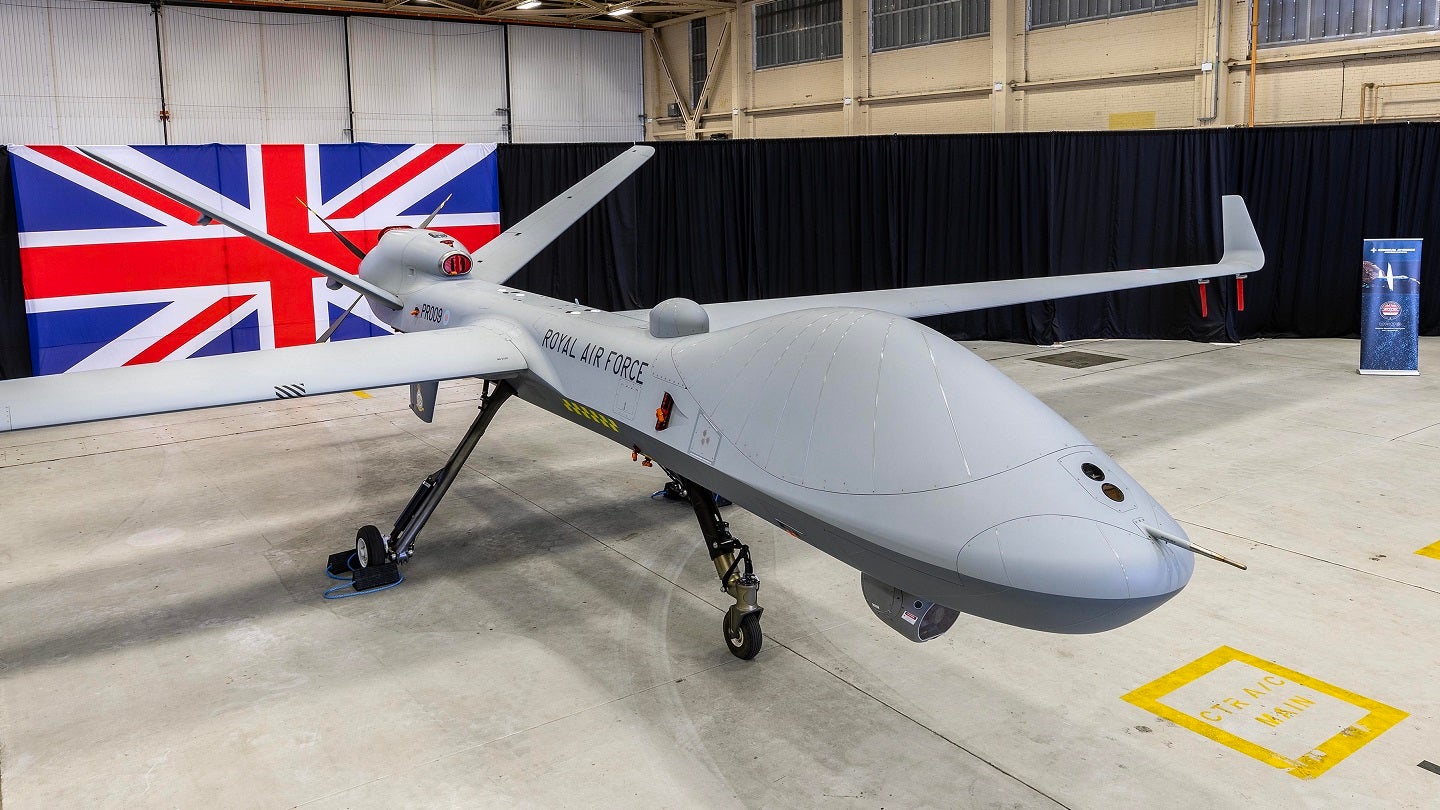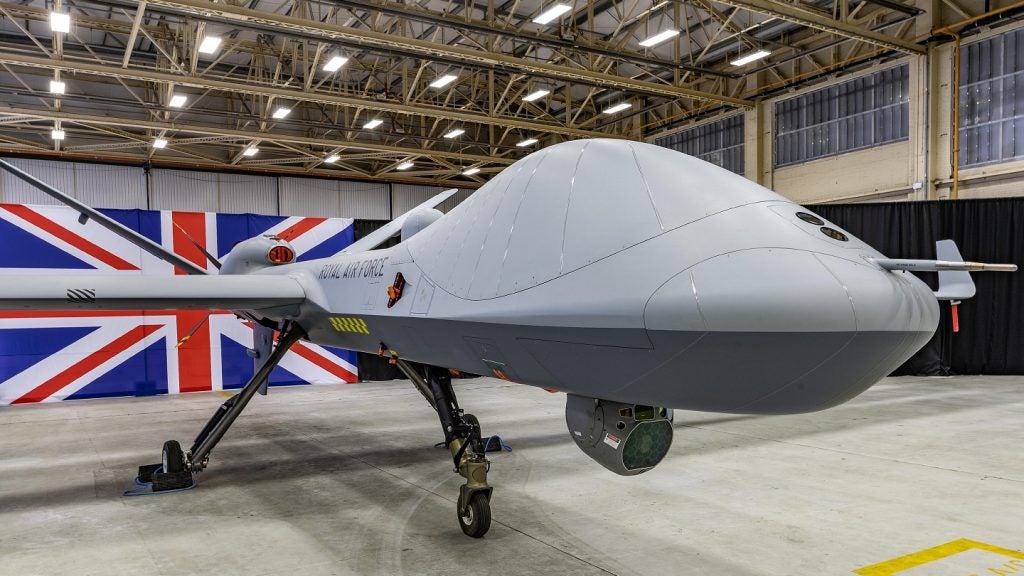
The first of the UK Royal Air Force’s (RAF) Protector RG Mk1 uncrewed aerial vehicles (UAVs) arrived at RAF Waddington in late September to commence trails, with the programme itself more than £500m ($607.2m) over budget and suffering delays to service entry and Initial Operational Capability (IOC).
In a 23 October release from the UK Ministry of Defence (MoD), it was revealed the first of the planned 16-strong fleet of RG Mk1 Protectors – which are UK variants of the MQ-9B platform manufactured by US-based General Atomics (GA-ASI) – would begin ground testing of satellite links of taxi procedures, as well as take-off and landing trials.
The initial tests of the Protector drone were also to incorporate a circuit above RAF Waddington. The drone arrived at RAF Waddington in September, before being assembled by RAF and contractor personnel in early October.
Equipped with a suite of surveillance equipment, the Protector aircraft will bring “a critical global surveillance capability for the UK, all while being remotely piloted from RAF Waddington”, stated the UK MoD.
With a wingspan of 79ft, the drone can operate at heights up to 40,000ft and has an endurance of more than 30 hours. Expected roles include land and maritime surveillance to track threats, counterterrorism and support to UK civil authorities, such as assisting HM Coastguard with search and rescue missions.
As with the RAF’s current fleet of MQ-9A Reaper drones, which is the familial predecessor to the MQ-9B, it is likely that the aircraft will also be used to carry out more traditional military intelligence, surveillance and reconnaissance duties, as well as ground attack operations using munition such as the Hellfire missile.

The aircraft has been assembled by a newly reformed 31 Squadron, which is preparing it for ground and air testing ahead of its anticipated in-service date later next year. The MoD stated that 31 Squadron, which previously operated the Tornado GR4, will operate and maintain the aircraft at RAF Waddington.
A key differentiator of Protector compared with the RAF current Reapers is the type’s ability to operate within commercial airspace, enabling a much greater area of operations, due to integrated sense-and-avoid technology.
Protector arrives in UK overbudget and delayed
The arrival of the first Protector is a significant milestone for the programme and provides the UK with a cutting-edge un-crewed capability to perform long endurance ISR operations, both over home skies as well as overseas. The RAF’s Reaper drones have been active in regions such as the Middle East, as well as the UK and Europe.
However, the programme’s budget increase from the 2016 Main Gate Business Case, which approved a whole-life cost of £1.24bn, albeit with a “50% confidence”, according to official UK Government parliamentary responses. As of March 2023, the current whole-lift cost projection exceeded £1.76bn, comprised of a £325m difference in acquisition costs and around £190m in through-life costs.
In addition, delays initiated by the UK MoD to the delivery of Protector, which required an extension of the RAF’s Reapers, resulted in a cost of £48.6m by March 2023, offset using support funding previously allocated to the Protector programme.
Initial planning for the Protectors at the 2016 Main Gate forecast an out-of-service date (OSD) of 2035, which has now shifted to 2040 according to the latest MoD planning. On current planning, Protector is expected to enter RAF service in late 2024, with an IOC declared in 2025.
The shift of the IOC to 2025 has been attributed to “software integration within the Prime Contractor and infrastructure challenges at RAF Waddington”, according to a 3 July UK parliamentary written response.
In addition, the 2040 time frame for Protector’s withdrawal from service is 24 months later than outlined in March this year, with the MoD’s Government Major Projects Portfolio 2023 data then listing an OSD of 2038.








